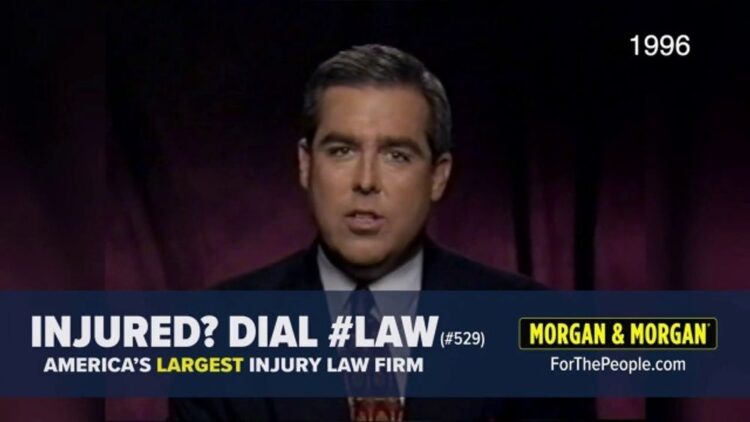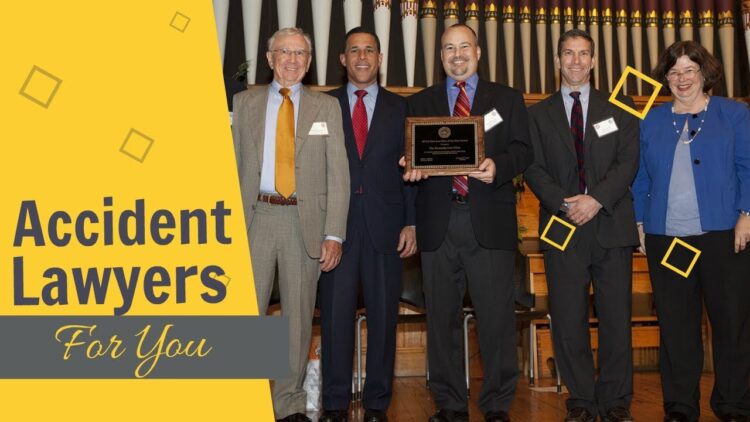
Understanding Workman’s Compensation
Workman’s compensation is a system of insurance that provides benefits to employees who are injured or become ill due to their work. It is a no-fault system, meaning that employees do not have to prove that their employer was negligent in order to receive benefits.
The purpose of workman’s compensation is to provide financial assistance to injured workers and their families, as well as to encourage employers to create safe workplaces. Workman’s compensation benefits can include medical expenses, lost wages, and disability benefits.
Coverage and Benefits
Workman’s compensation covers a wide range of injuries and illnesses that are caused by work. This includes injuries that occur on the job, as well as illnesses that are caused by exposure to hazardous substances or conditions at work.
Some examples of eligible injuries or illnesses covered under workman’s compensation include:
- Broken bones
- Cuts and lacerations
- Burns
- Repetitive stress injuries
- Occupational diseases
The Role of a Workman’s Comp Lawyer
Workman’s comp lawyers play a vital role in protecting the rights of injured workers. They provide legal representation and guidance to help workers navigate the complex workers’ compensation system and obtain the benefits they deserve.
Primary Responsibilities
The primary responsibilities of a workman’s comp lawyer include:
- Representing injured workers in workers’ compensation hearings and proceedings.
- Negotiating settlements with insurance companies on behalf of injured workers.
- Advising injured workers on their rights and options under the workers’ compensation system.
- Preparing and filing legal documents, such as claims and appeals.
Assisting Injured Workers
Workman’s comp lawyers assist injured workers in various ways, including:
- Helping injured workers understand their rights and the workers’ compensation process.
- Providing legal representation in hearings and appeals.
- Negotiating settlements with insurance companies to ensure injured workers receive fair compensation.
- Protecting injured workers from being taken advantage of by insurance companies.
Advantages of Hiring a Workman’s Comp Lawyer
There are several advantages to hiring a workman’s comp lawyer, including:
- Increased likelihood of obtaining fair compensation.
- Reduced stress and hassle associated with the workers’ compensation process.
- Peace of mind knowing that your rights are being protected.
- Access to legal expertise and guidance throughout the process.
Choosing a Workman’s Comp Lawyer

Selecting a qualified workman’s comp lawyer is crucial for maximizing your chances of success in your claim. Here are some key factors to consider:
Experience
Experience in handling workman’s comp cases is paramount. Look for a lawyer who has successfully represented clients in similar situations and understands the complexities of the system.
Reputation
A lawyer’s reputation among peers and clients is a valuable indicator of their competence and integrity. Check online reviews, ask for referrals, and consult with other attorneys to gather insights.
Fees
Fees vary among lawyers, so it’s important to discuss payment arrangements upfront. Some lawyers charge hourly rates, while others work on a contingency basis, meaning they only get paid if they win your case.
Finding and Interviewing Lawyers
* Online directories: Search online directories such as the American Bar Association (ABA) or the National Association of Workers’ Compensation Lawyers (NAWCL).
* Referrals: Ask friends, family, or colleagues for recommendations.
* Interviews: Schedule consultations with potential lawyers to discuss your case, their experience, and fees. Prepare questions and come prepared with any relevant documents.
The Workman’s Compensation Process
Navigating the workman’s compensation process can be intricate. Understanding the steps involved, as well as the roles of the injured worker, employer, and insurance company, is essential to ensure a smooth and successful claim.
The process typically unfolds as follows:
Step 1: Reporting the Injury
- The injured worker must promptly report the injury to their employer, typically within 30 days.
- A formal report should be filed, detailing the nature of the injury, the date and time it occurred, and any witnesses.
Step 2: Medical Treatment
- The employer is responsible for providing medical treatment to the injured worker.
- The worker may choose a physician from a list provided by the employer or insurance company.
- The physician will assess the injury and recommend appropriate treatment.
Step 3: Temporary Disability Benefits
- If the injury results in lost wages, the worker may be eligible for temporary disability benefits.
- These benefits typically cover a portion of the worker’s lost income.
Step 4: Permanent Disability Benefits
- If the injury results in a permanent disability, the worker may be eligible for permanent disability benefits.
- The amount of benefits will vary depending on the severity of the disability.
Step 5: Settlement or Trial
- The insurance company may offer a settlement to the injured worker.
- If the worker does not accept the settlement, the case may go to trial.
Potential Challenges and Delays
The workman’s compensation process can be challenging and may involve delays.
- Disputes over the nature and extent of the injury.
- Delays in receiving medical treatment or benefits.
- Disagreements over the amount of compensation.
To overcome these challenges, it is advisable to seek legal assistance from an experienced workman’s compensation lawyer.
Negotiating and Settling a Workman’s Comp Claim
Negotiating a workman’s compensation claim involves a back-and-forth process between the injured worker and the insurance company. The goal is to reach a fair settlement that compensates the worker for their injuries and lost wages.
Negotiations typically begin with the worker submitting a claim to the insurance company. The insurance company will then investigate the claim and make an offer of settlement. The worker can then accept the offer, negotiate for a higher settlement, or file a lawsuit.
There are a number of factors that can affect the negotiation process, including the severity of the worker’s injuries, the amount of lost wages, and the insurance company’s willingness to settle.
Strategies for Maximizing Compensation
There are a number of strategies that workers can use to maximize their compensation, including:
*
- Documenting your injuries: Keep a detailed record of your injuries, including medical records, photographs, and witness statements.
- Getting a second opinion: If you are not satisfied with the insurance company’s assessment of your injuries, get a second opinion from an independent medical examiner.
- Negotiating with the insurance company: Be prepared to negotiate with the insurance company. Do not accept the first offer they make. Be willing to walk away from the negotiation if the insurance company is not willing to offer a fair settlement.
Reaching a Fair Settlement
A fair settlement is one that compensates the worker for their injuries and lost wages. The settlement should also include provisions for future medical care and lost earning capacity.
If you are unable to reach a fair settlement with the insurance company, you may need to file a lawsuit. A lawsuit can be a long and expensive process, but it may be necessary to get the compensation you deserve.
Common Issues in Workman’s Compensation Cases

Workman’s compensation cases often involve disputes and issues that can delay or hinder the resolution of claims. These issues can range from disagreements over the extent of an injury to disputes about the amount of benefits owed.
There are a number of strategies that can be used to resolve these issues, including mediation, litigation, and negotiation. The best approach will depend on the specific circumstances of the case.
Mediation
Mediation is a form of alternative dispute resolution that involves a neutral third party helping the parties to reach a settlement. Mediation can be a helpful way to resolve disputes without the need for litigation.
In a mediation, the mediator will meet with the parties separately and together to help them identify the issues in dispute and to develop a mutually acceptable solution. The mediator does not make a decision for the parties, but rather helps them to reach their own agreement.
Litigation
If mediation is unsuccessful, the parties may need to resolve their dispute through litigation. Litigation is the process of filing a lawsuit in court. A judge or jury will then decide the outcome of the case.
Litigation can be a lengthy and expensive process. However, it may be necessary in cases where the parties are unable to reach a settlement through mediation or negotiation.
Negotiation
Negotiation is another option for resolving disputes in workman’s compensation cases. Negotiation involves the parties working together to reach a mutually acceptable agreement.
Negotiation can be a helpful way to resolve disputes without the need for mediation or litigation. However, it is important to remember that negotiation is a process of give and take. Both parties must be willing to compromise in order to reach a settlement.
Examples of Successful Case Outcomes
There are many examples of successful case outcomes in workman’s compensation cases. In one case, a worker who was injured on the job was able to negotiate a settlement with his employer that provided him with a lump sum payment and ongoing medical benefits.
In another case, a worker who was unable to return to work after an injury was able to obtain a settlement that provided him with retraining benefits. This allowed him to find a new job and to continue to support his family.
Additional Resources and Information

Navigating the complexities of workman’s compensation can be challenging. To assist injured workers, numerous resources and support systems are available.
These resources offer guidance, support, and legal assistance to help individuals understand their rights, access benefits, and navigate the legal process.
Government Agencies
- U.S. Department of Labor (DOL): Provides comprehensive information on workman’s compensation laws, benefits, and resources.
- Social Security Administration (SSA): Offers disability benefits to eligible injured workers.
- State Workers’ Compensation Agencies: Administer workman’s compensation programs within their respective states.
Support Groups and Online Forums
Connecting with others who have experienced similar challenges can provide valuable support and insights.
- Injured Workers of America (IWOA): A national organization that advocates for the rights of injured workers.
- Workers’ Compensation Support Network: An online forum where injured workers can share experiences and offer support.
Legal Aid and Pro Bono Services
For those facing financial constraints, legal aid and pro bono services provide access to legal representation.
- Legal Services Corporation (LSC): A non-profit organization that funds legal aid programs across the country.
- American Bar Association (ABA): Offers pro bono services through its Legal Assistance Program.
Recent Developments and Trends in Workman’s Compensation Law
The field of workman’s compensation law is constantly evolving. Staying informed about recent developments can help ensure that individuals are aware of their rights and available benefits.
- Increased focus on mental health injuries: Recent legal changes have recognized the impact of mental health conditions on workplace injuries.
- Expansion of coverage for gig workers: Some jurisdictions are expanding workman’s compensation coverage to include gig workers and independent contractors.
- Technological advancements: Advancements in technology are streamlining the claims process and improving access to information for injured workers.





